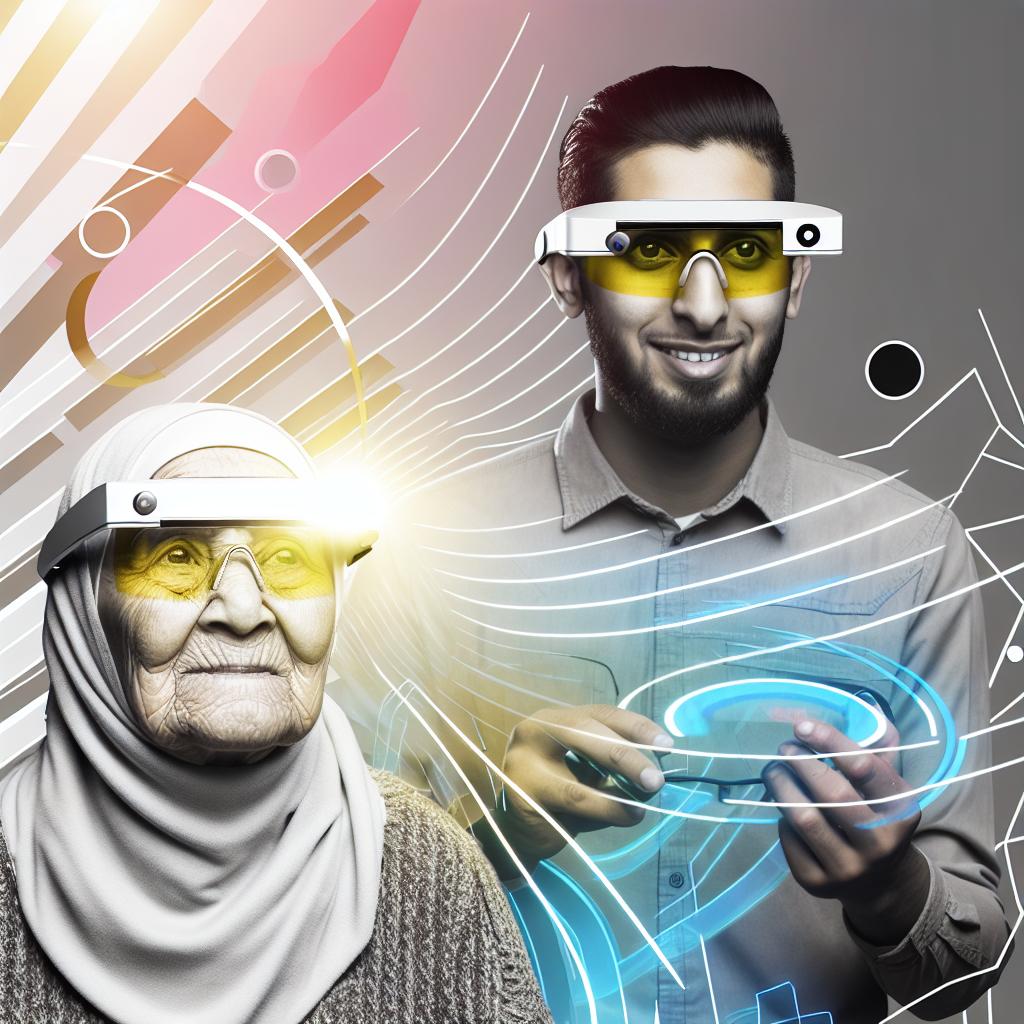Introduction
Smart glasses have emerged as a promising technology aimed at improving the quality of life for visually impaired individuals. These devices incorporate advanced technologies to assist users in navigating their environments, identifying obstacles, and performing daily activities with greater ease and independence. Unlike traditional assistive devices, smart glasses offer a more integrated solution that combines multiple functionalities into a single, wearable device. By understanding how these glasses work and their various applications, we can appreciate the potential impact they have on the lives of those with visual impairments.
How Smart Glasses Work
Smart glasses operate by integrating several technological components and advanced software to process and relay information to the user. These systems are designed to work together seamlessly, transforming visual data into usable information.
Core Technologies
The core technologies embedded in smart glasses for visually impaired users include several innovative solutions:
Cameras and Image Processing: Smart glasses utilize cameras to capture visual data from the surrounding environment. These cameras are often high-resolution, allowing for detailed image capture. The captured images are then processed using sophisticated image processing techniques to recognize and interpret objects, faces, and even text. This information is crucial for providing relevant feedback to the user.
Audio Output: Once visual data is processed, smart glasses employ audio output technologies to convey information to the user. This is typically achieved through bone conduction or standard earphones. Bone conduction transmits sound vibrations through the bones of the skull to the inner ear, allowing users to hear audio cues without obstructing ambient sounds around them. This ensures that users remain aware of their environment while receiving the necessary guidance from the glasses.
Connectivity: To enhance functionality, smart glasses come equipped with wireless technologies such as Bluetooth and Wi-Fi. These connectivity features enable the glasses to integrate with smartphones and other devices, providing access to cloud-based services for updates, additional functionalities, and data storage. Staying connected ensures that the glasses can offer real-time assistance and leverage external resources for improved performance.
Applications in Daily Life
The capabilities of smart glasses expand across various domains, enhancing daily living for visually impaired individuals. By providing multisensory feedback, these devices assist users in numerous practical areas:
Navigation Assistance: One of the most significant applications of smart glasses is navigation assistance. Using GPS and image recognition technologies, these devices can provide real-time directions and identify potential obstacles, allowing users to confidently traverse unfamiliar environments. Audio cues guide the user, indicating turns, landmarks, and alerting them to any changes in terrain or potential hazards.
Object and Text Recognition: Smart glasses are equipped with the ability to identify and interpret objects and text in a user’s surroundings. By scanning and processing images, the glasses can read printed text from road signs, books, and other materials, rendering this information audibly to the user. This feature makes information previously inaccessible much more attainable, enhancing the user’s autonomy in various tasks.
Facial Recognition: Social interactions are further facilitated through facial recognition capabilities. Smart glasses can identify and differentiate between familiar and unfamiliar faces, assisting users in navigating social settings with ease. This feature is particularly beneficial in group activities or public spaces, where recognizing individuals can be challenging for those with visual impairments.
Case Studies and Research
Several research initiatives and companies are pioneers in the development of smart glasses for visually impaired individuals. For instance, OrCam manufactures devices that employ advanced algorithms to intuitively interpret the visual world, providing critical audio descriptions. These descriptions support daily activities such as reading and shopping, allowing for a smoother user experience. Additionally, Enuclia is focused on refining the user interface for better interaction, making their devices more intuitive and user-friendly. These case studies exemplify the diverse approaches being taken to devise effective smart glass solutions for the visually impaired.
Challenges and Considerations
While smart glasses hold great promise, they are not without challenges or limitations that must be addressed to maximize their impact.
Cost: The cost of developing and purchasing smart glasses is often prohibitive, limiting access for many potential users. This expense is driven by the high cost of the technological components and the extensive research and development needed to create these devices. Efforts to reduce manufacturing costs and explore financing or subsidy options will be crucial in broadening access.
Technological Limitations: Current iterations of smart glasses face challenges such as limited battery life and processing power. These factors can affect the device’s performance, reducing its reliability during prolonged use. Continuous advancements in energy-efficient technologies and more powerful processing units are necessary to overcome these issues, enhancing the practicality of smart glasses in daily scenarios.
Social Acceptance and Aesthetics: The design and appearance of smart glasses play a significant role in their adoption. Many users may feel self-conscious wearing a device that is visibly different from conventional eyewear. There is a need for smart glasses to be stylish and socially acceptable to encourage wider usage. Balancing functionality with aesthetics will be critical for future designs.
Future Developments
The field of smart glasses is rapidly evolving, with numerous potential advancements on the horizon. Continuous innovations in artificial intelligence and the miniaturization of components promise enhancements in both the functionality and user experiences of smart glasses. Developments such as increased algorithm accuracy, extended battery life, and refined design aesthetics are likely to emerge, making these devices more appealing and user-friendly. As technology progresses, the accessibility and affordability of smart glasses are expected to improve, widening their impact and inclusivity.
Conclusion
Smart glasses represent a significant leap forward in assistive technologies tailored for individuals with visual impairments. By harnessing cutting-edge advancements, these devices offer unparalleled tools for increased independence and a better quality of life. Continued efforts in research, development, and the pursuit of affordability and accessibility will be essential in realizing their full potential. As this field grows, smart glasses stand to become not only practical tools but also integral supplements to the lives of those they are designed to aid.
